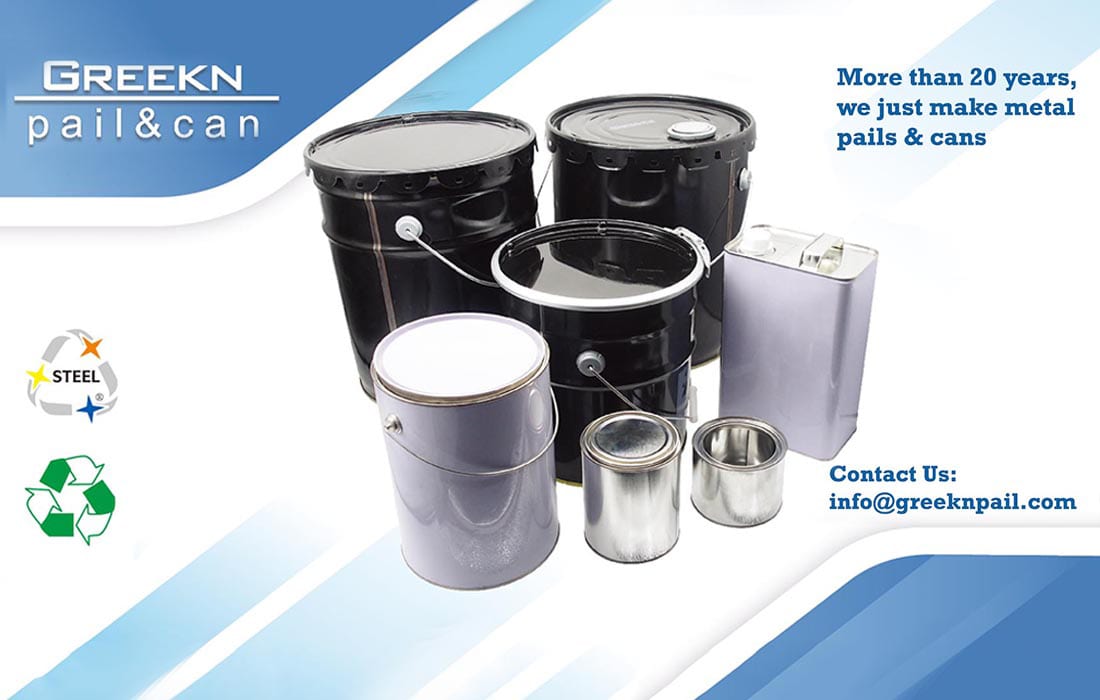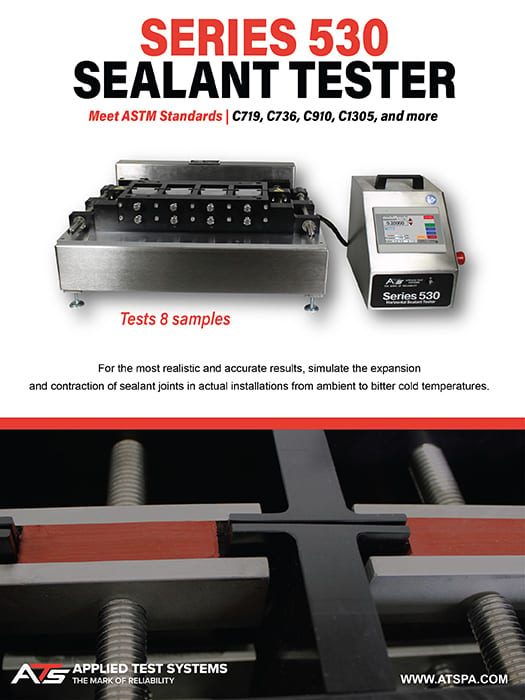FEATURE
Understanding the Capabilities of Handheld Dispensing Equipment
Image courtesy of undefined undefined / iStock / Getty Images Plus Collection via Getty images
Many important factors should be considered when selecting the best dispenser for an adhesive or sealant application.
By Timm Herman, President, Meritool LLC
As with any tool, selecting the right kind of dispenser for any job—big or small—is essential for ensuring a durable finished product that meets safety and quality standards. Many important factors should be taken into consideration when selecting the best dispenser for a project, ranging from the type of material being dispensed to the environmental impact of the tools involved.
Manual, Pneumatic, or Cordless Dispensing?
For applications involving low force, small material amounts, and low flow consistency, manual dispense guns are typically the best choice. Powered tools—either battery or pneumatic—come into play when any of these three variables change. The mixing force requirements of high-viscosity 1K materials or 2K materials of any viscosity often impact the move to power. Worker ergonomics and productivity are the key drivers here.
In addition, flow consistency can affect the bond performance of a 2K material. The pulsing force of a manual tool may not deliver acceptable results. In these cases, consistent bond performance is the driver and a powered tool may be a better choice.
When the considerations of force, material volume, and flow consistency have been evaluated, and a power tool is indicated, the next choice is typically a pneumatic gun. Generally speaking, pneumatic tools have a lower acquisition cost than their cordless counterparts and are sometimes lighter.
Cordless tools’ advantage over pneumatic tools is primarily portability. Cordless guns do not require an air source, making them “go-anywhere” tools. In addition, they are not tethered to an air hose, which can free up the worker to be more productive. In recent years, developments in lithium-ion (Li-ion) battery technology have reduced and reversed the power advantage previously held by pneumatic tools.
Application Examples
The first battery-powered cordless dispensers were made for the automotive glass replacement market. The application challenge was to lay an extremely even bead of a highly viscous urethane in a mobile service environment.
Cordless won out over previous manual and pneumatic applicators as the tool of choice. These began as 12V NiCd-powered tools and are now powered by 20-V Li-ion packs, offering about four times the capability. (See 20-V AGR dispenser, 10 oz.)
Two-Component Dispensers
In the early 2000s, some of the first two-component cordless dispensers were created for a construction adhesive company. The company was developing a spot-bonding epoxy designed to replace full-bed mortar for stone cladding applications, an approach that would reduce assembly labor by over 50%. The application of adhesives in this way was a breakthrough and required a cordless gun that was also revolutionary.
This tool became the basis for two-component dispensing gun ranges today. It remains the industry’s most powerful dispensing gun, with models up to 7 kN in dispensing force. The drive system enables high forces, on-ratio performance, and a high degree of ruggedness and reliability.* (See Epoxy dispenser, 600 ml, 1:1)
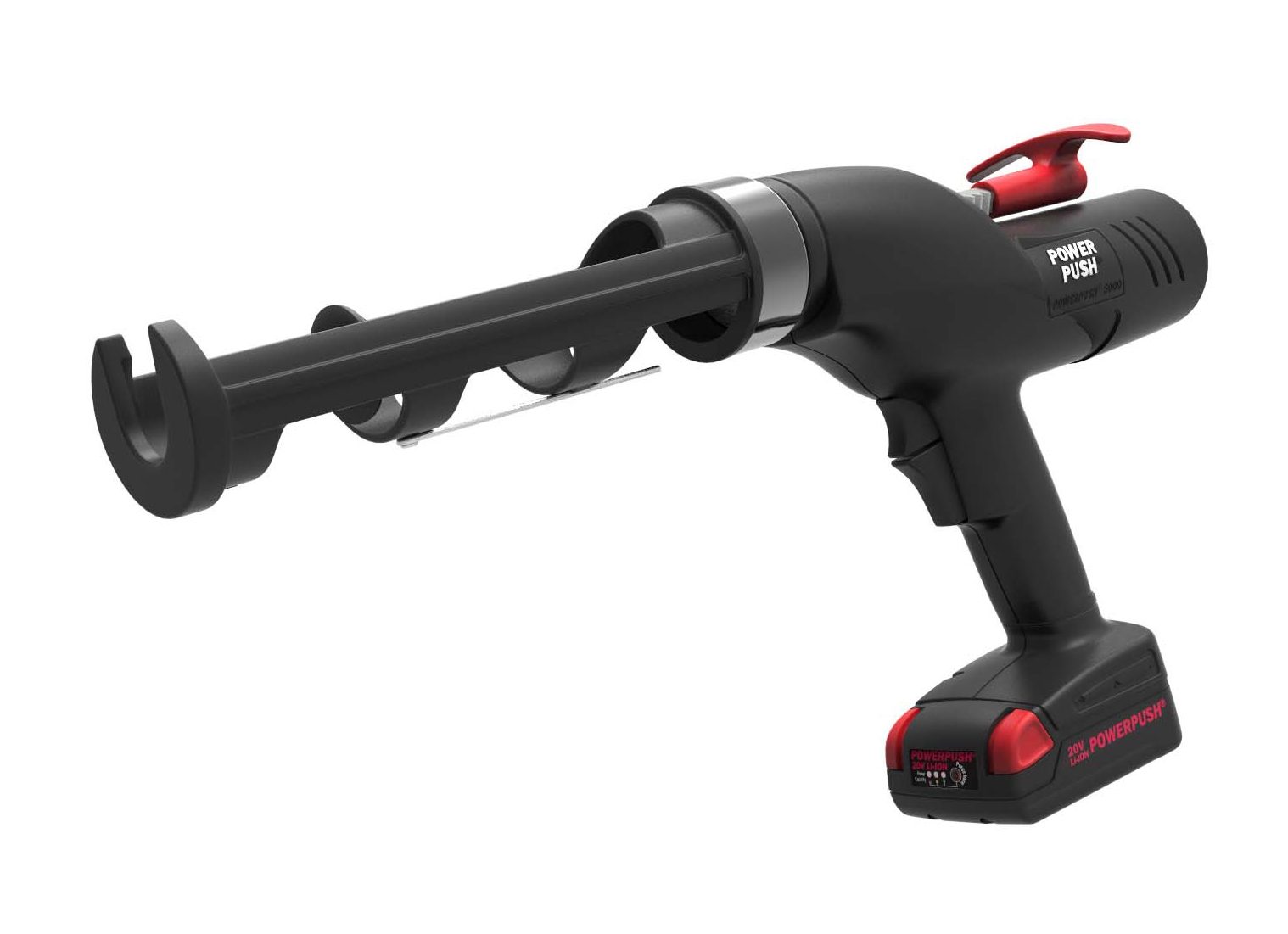
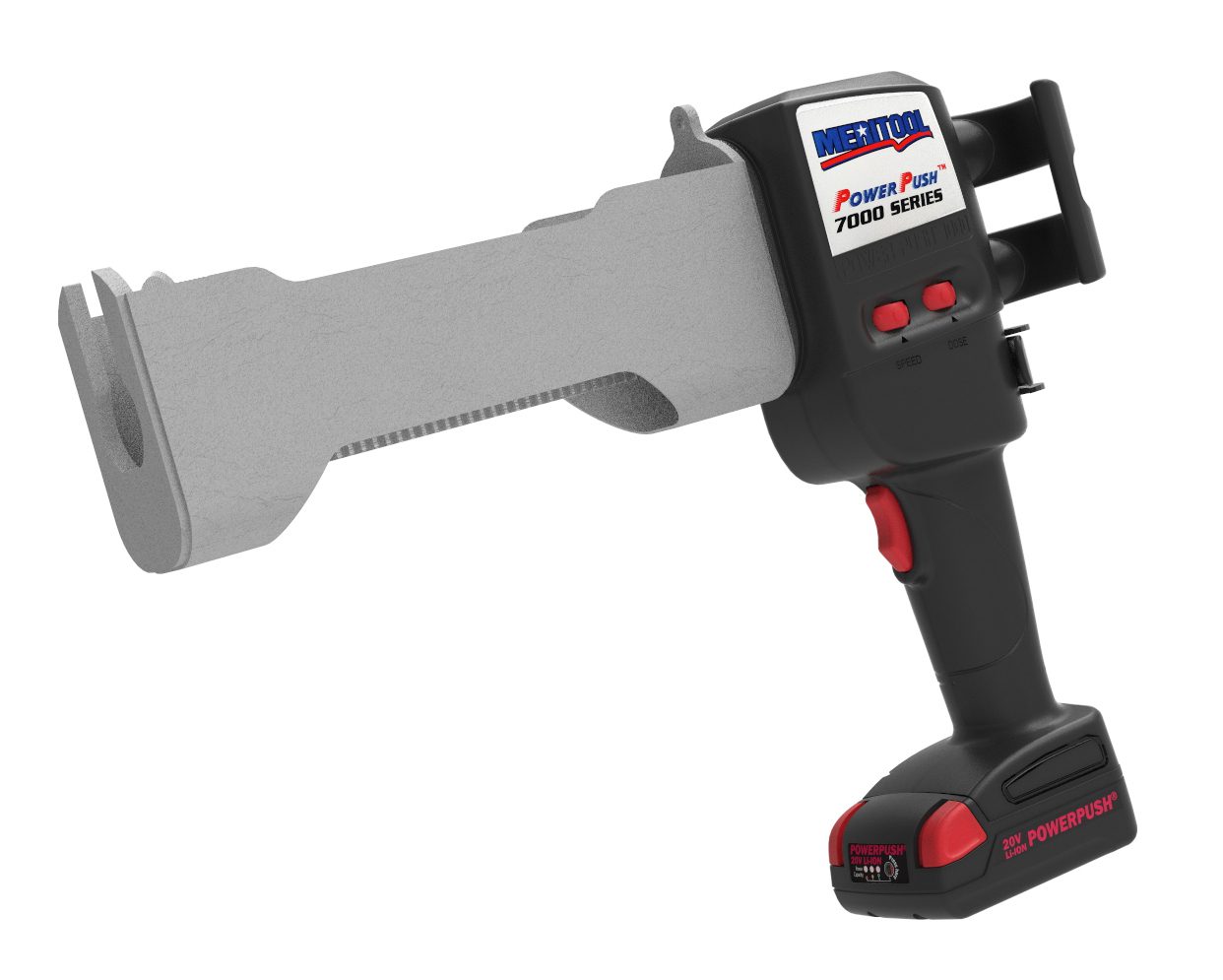
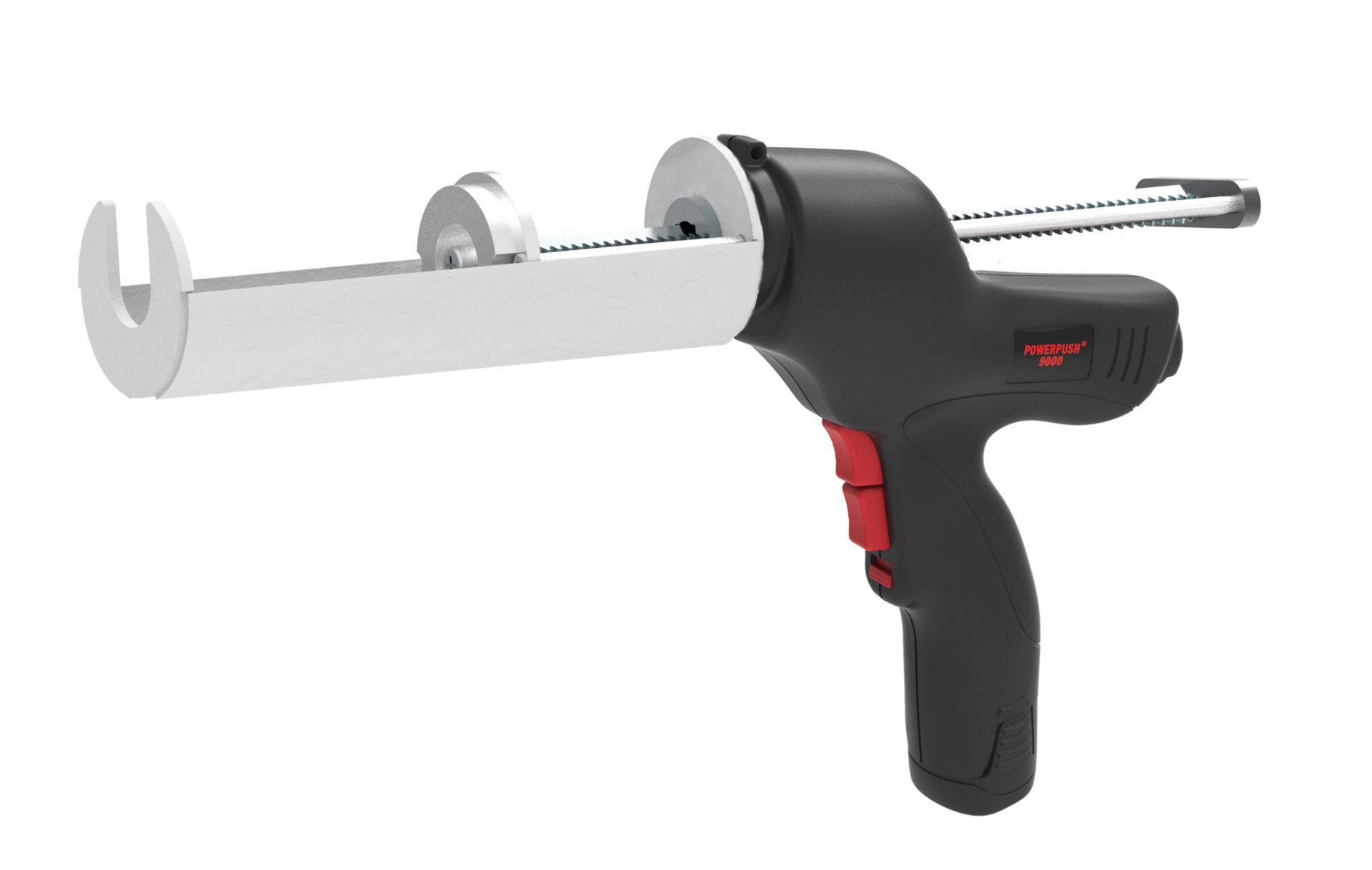

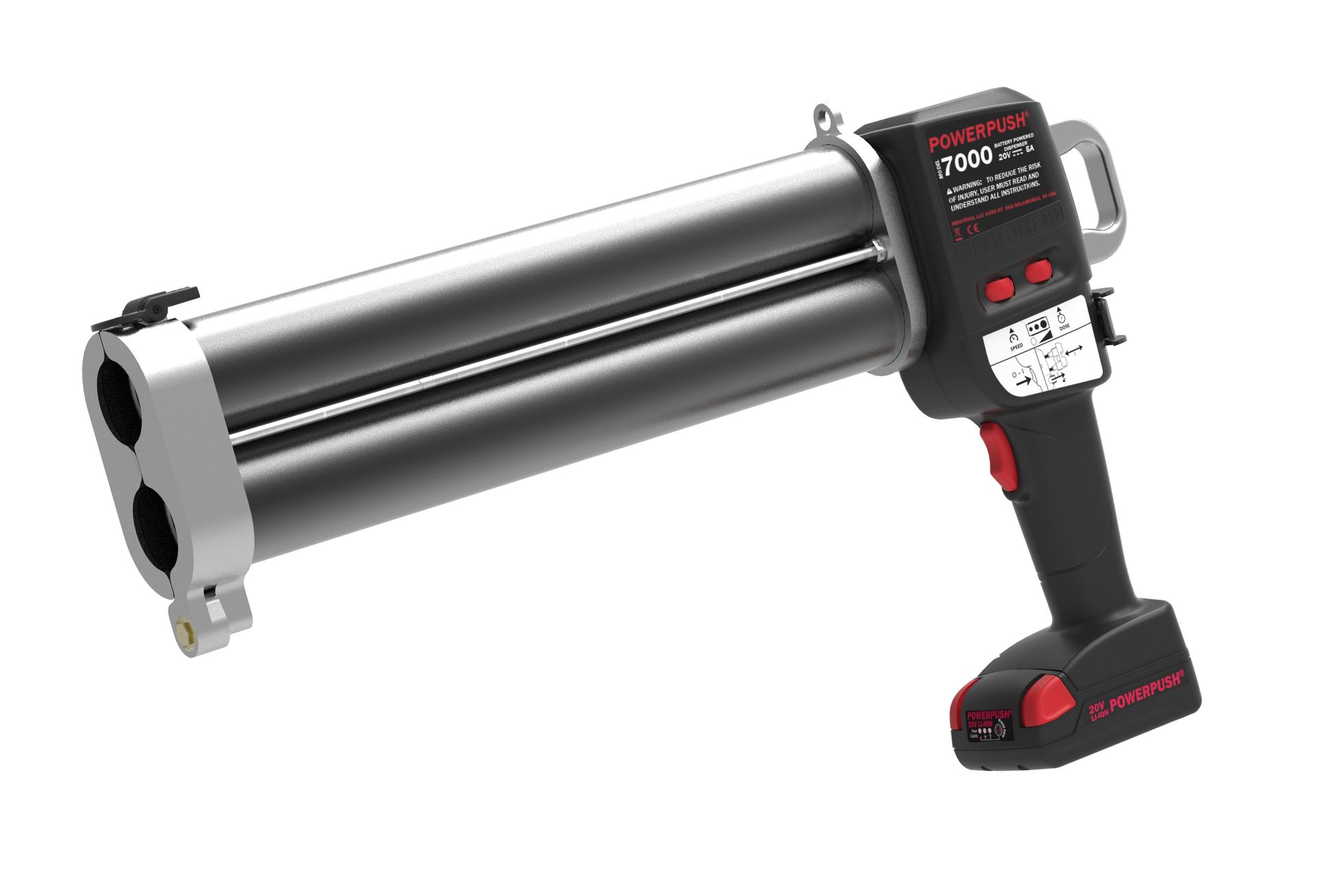
Affordable Dosing
A longstanding requirement in industrial applications, the dosing of materials typically requires a dosing system. Dosing as an available feature on cordless handheld tools provides a flexible cost-effective solution to this product category.
Dosing may range as high as several hundred ml down to 1 ml, depending on application requirements and packaging. Dosing is settable by the user to suit specific applications. (See 2K dosing gun, 380 ml, 10:1.)
Electric Vehicle Batteries
An adhesive company serving the automotive industry needed to dispense a two-component urethane used in the assembly of an electric vehicle (EV) battery. The requirements for high force, steady speed, and unique packaging specifications were challenging and existing solutions were not readily available.
A tool was developed by working with the adhesive company through several product generations to achieve OE approval. Additional guns have been developed specifically for EV assembly and service needs. (See Electric vehicle service tool, 495 ml, 10:1.)
Sustainable Packaging Options
Sausage packaging has long been an alternative to cartridges in industry. Sausages are known to reduce packaging waste by over 90%, and this is often discussed as one of the sustainable choices that can be made by adhesives and sealants manufacturers. (See 2K sausage dispenser, 1,200 ml, 1:1.) One downside of sausages, however, is that the dispensing equipment at the end-user level has been limited and not user friendly.
Battery-powered dispensing guns also offer more sustainability advantages. By allowing users to cut the cord, cordless dispensing guns reduce energy costs related to pneumatic systems. Up to 10% of a factory’s energy cost is tied to the production of compressed air, and 30% of this air leaks away before it reaches the tool. Manufacturing facilities also must dispose of the oily condensate produced by compressors, and compressors require monitoring and maintenance. The capital and operating costs involved in using compressed air are significant.
As the advantages of pneumatic tools over cordless have diminished, so has the return on these higher costs. Cordless dispensing guns are less expensive to maintain, and they help lead to a safer working environment by eliminating the tripping hazards of hoses and cords. The Li-ion batteries can be safely recycled when they have reached the end of their lifespan.
Manufacturing industries everywhere are seeking ways to become more sustainable, and cordless tools can be a small but important part of this effort. The use of cordless dispensing products can lead to a greener future, as even small, local changes have a lasting global impact.
For more information, contact the author at (716) 542-8337 or timmh@meritool.com, or visit www.meritool.com.
*The dualdirect™ drive system by Meritool.
